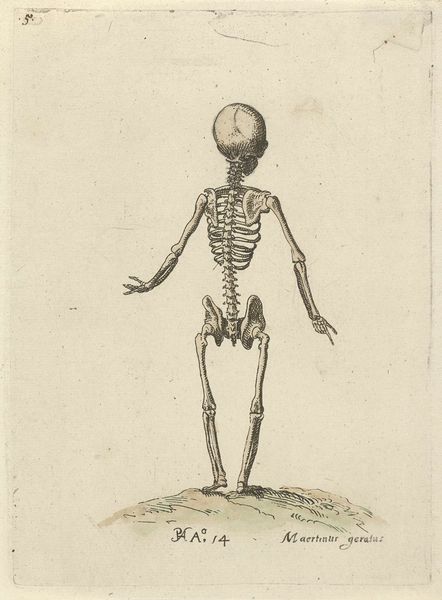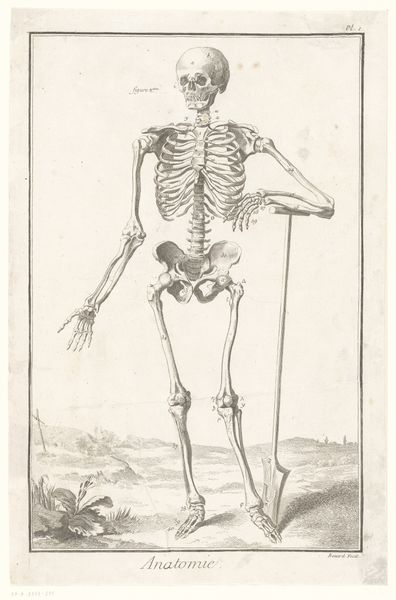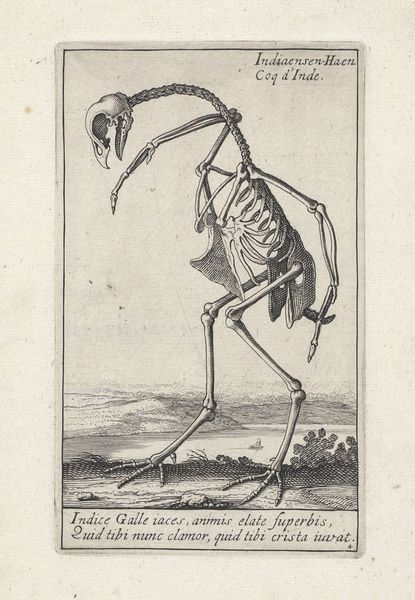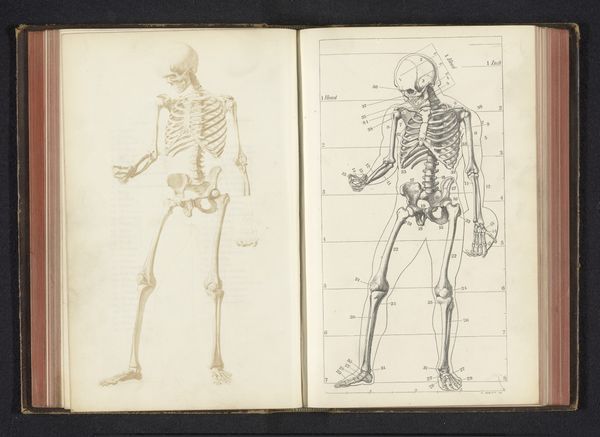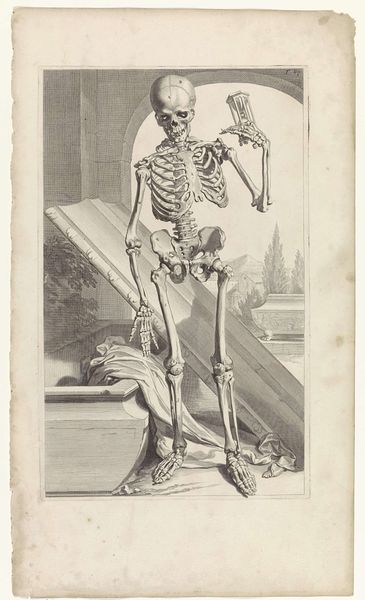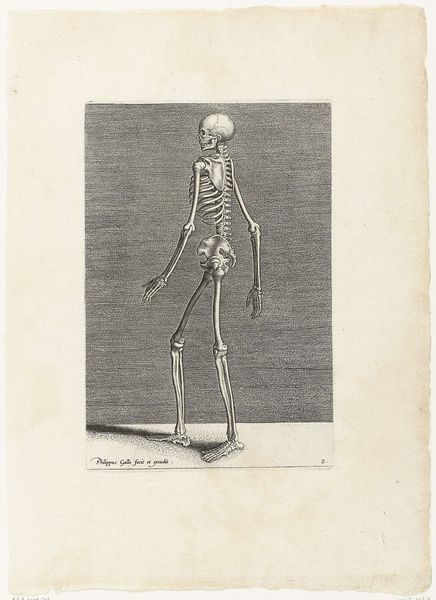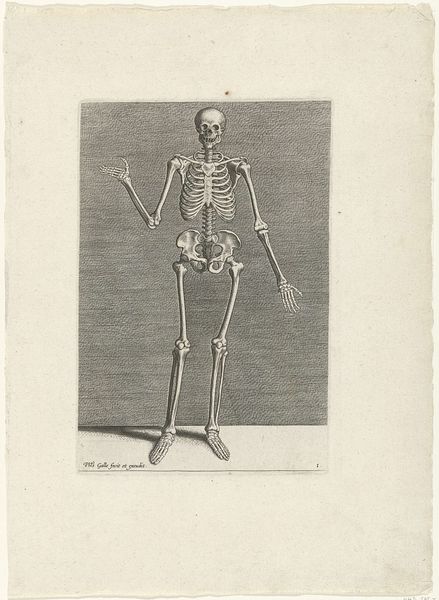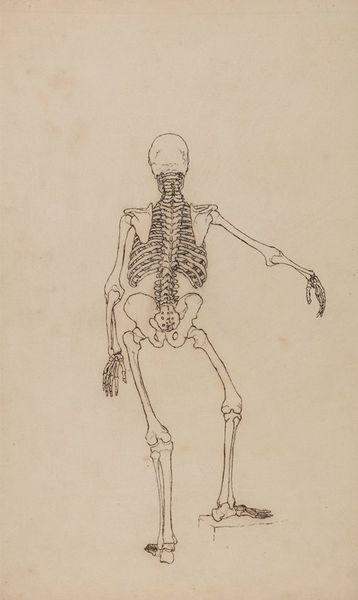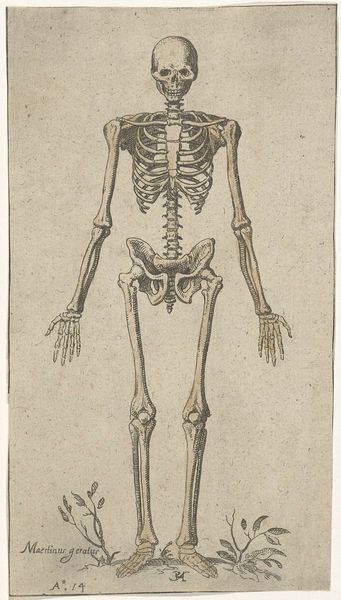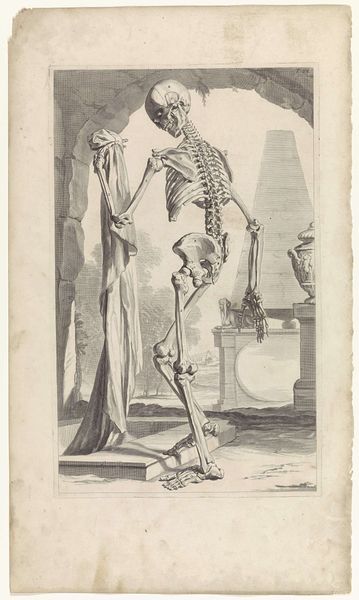
drawing, print, etching
#
portrait
#
drawing
# print
#
etching
#
figuration
#
15_18th-century
#
line
#
history-painting
#
academic-art
Dimensions: 150 mm (height) x 100 mm (width) (plademaal)
Curator: Here we have "Skelet," an etching by Gerhard Ludvig Lahde, likely created sometime between 1765 and 1833. It's currently held at the SMK, Statens Museum for Kunst. My first impression is, well, how…academic it feels. Editor: Yes, academic but with a certain wry humor. I mean, it's a skeleton waving! The linework is so precise, almost clinical, and yet there's a levity to it. I can imagine Lahde, hunched over his plate, meticulously etching each tiny bone. What kind of paper and inks were circulating at the time? I'd love to know about the workshops turning these out. Curator: Right, the materiality is important, especially in printmaking. Lahde was likely influenced by the Enlightenment's focus on anatomical study. The gesture… is it a greeting, a farewell, or maybe a slightly macabre 'hello'? Editor: A material greeting from beyond. It raises a few questions about the artist's access to source material. A skeleton wasn't something one would see daily. It makes you wonder who controlled the bones and the context surrounding the medical establishment or whatever resources were made available to him. The production values seem simple. I can easily imagine hundreds of these leaving some workshop... for whom and to what end? Curator: Perhaps intended for medical students, or even just those curious about human anatomy, or even sold in bulk to adorn stuffy medical practices! It speaks to that period's fascination with understanding the human body. Still, beyond its anatomical purpose, it’s impossible not to see the Vanitas tradition, that the artist felt he needed to depict what lies beyond the exterior? Editor: Absolutely, but beyond its message, you can start to envision some production context that considers it less as singular than another object emerging from specific production and socio-economic circumstance. Thinking more about the labor required and where it sat culturally. This is something a lot of work from this period would allow and call for. Curator: Considering the etching's almost playful rendering, this becomes, as you suggested, more of a mass produced article with far greater outreach potential than, say, the same illustration appearing only in a dusty old tome locked away in an institute. A reminder, in readily-available form. Fascinating indeed. Editor: A point that makes Lahde’s statement timeless in its relevance today.
Comments
No comments
Be the first to comment and join the conversation on the ultimate creative platform.

